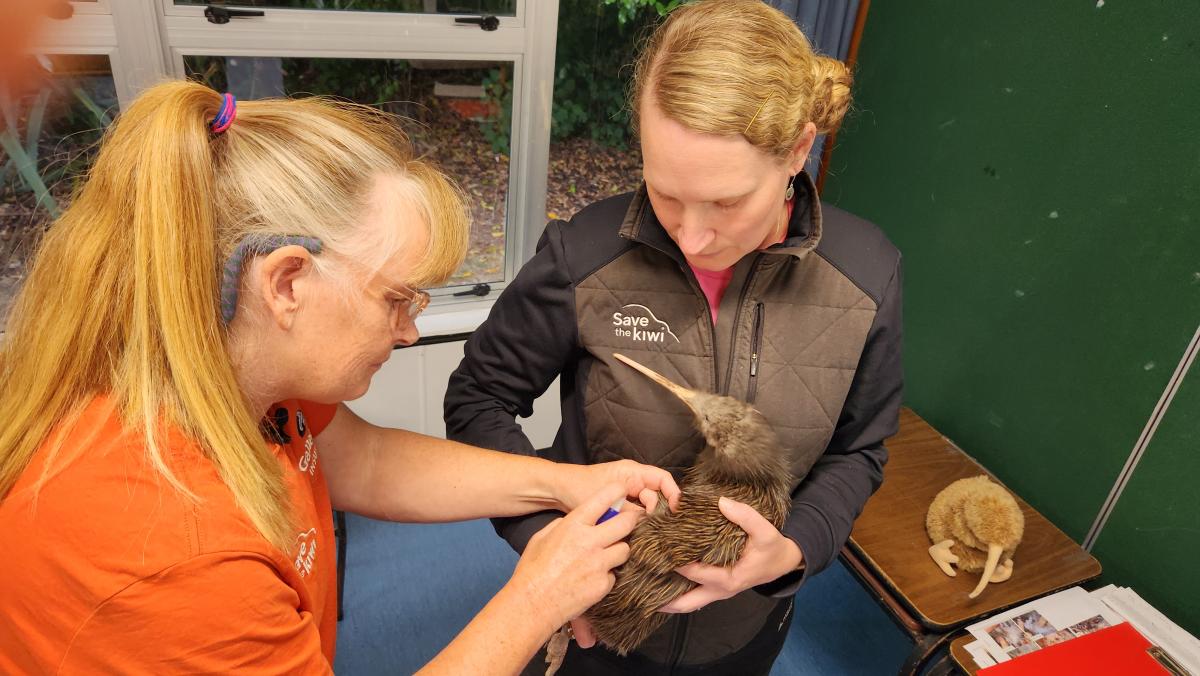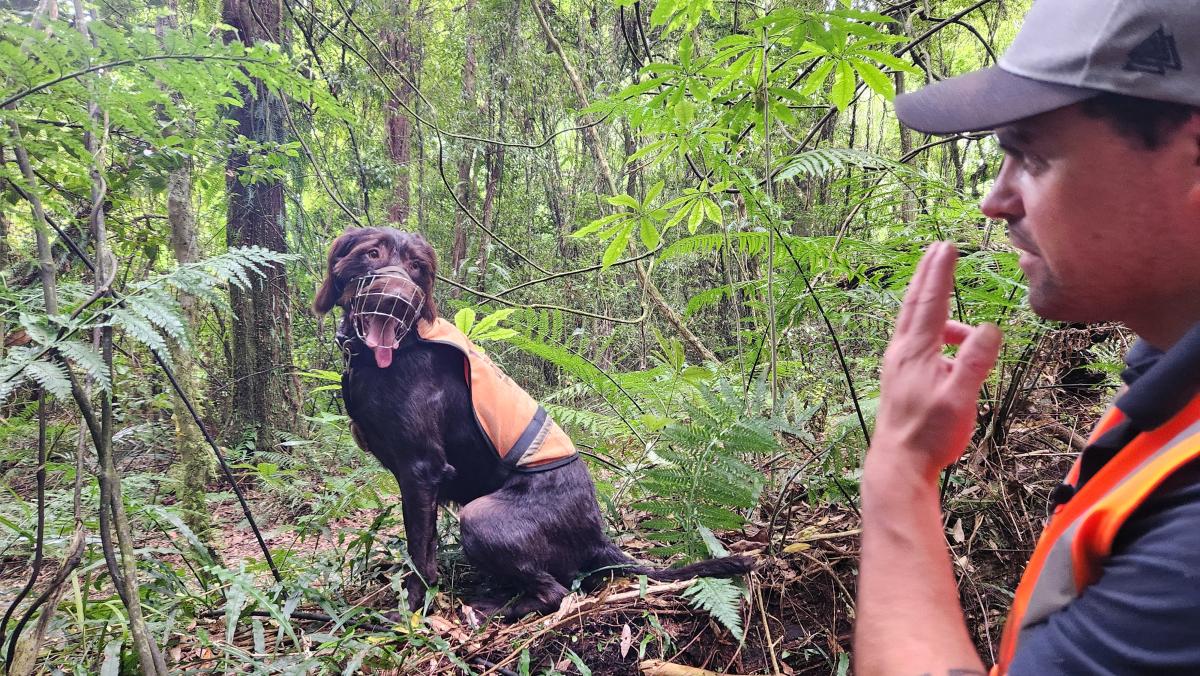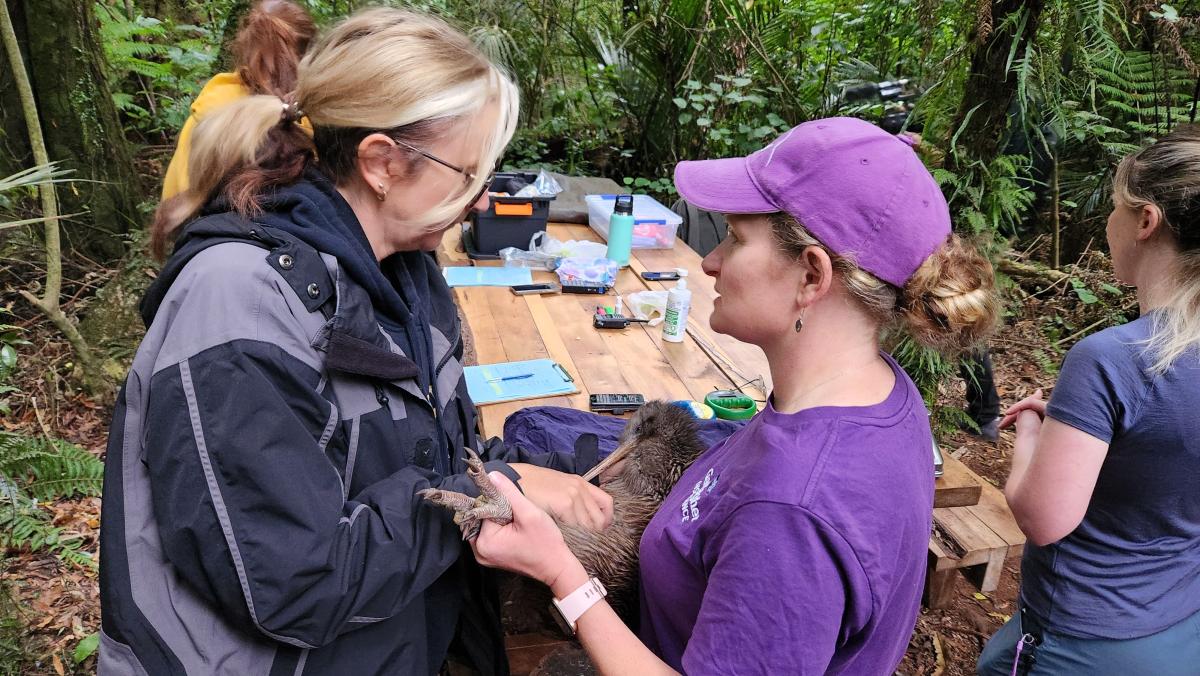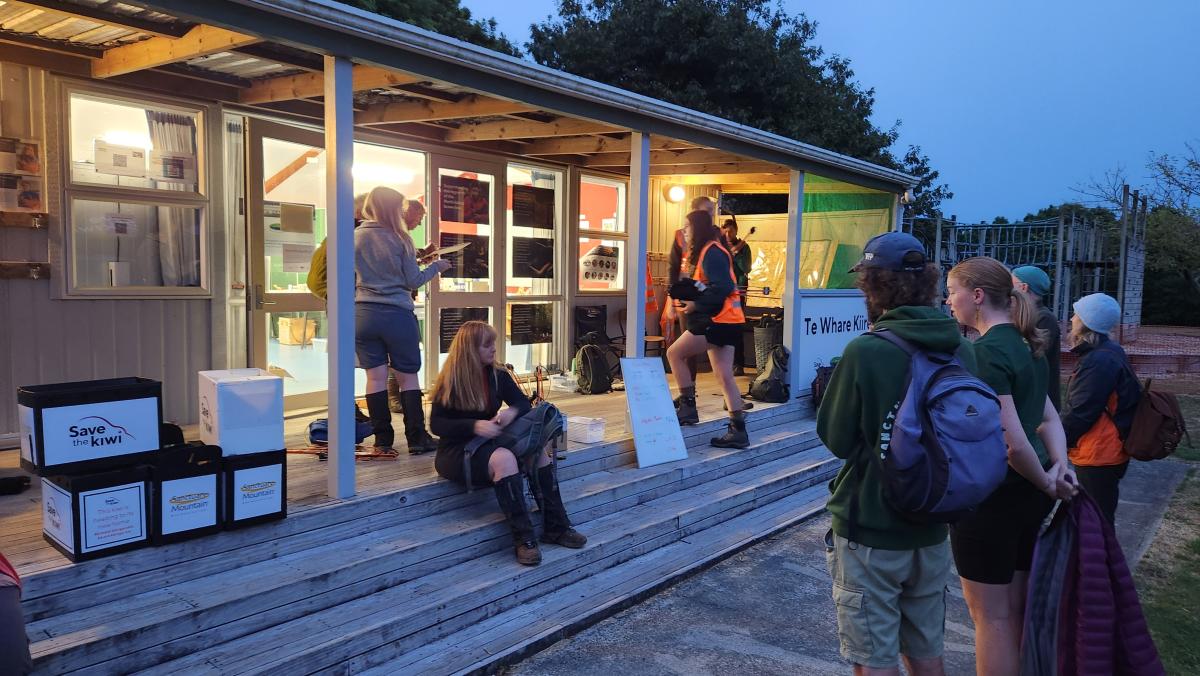In 2017, Sanctuary Mountain Maungatautari and mana whenua became part of a special kaupapa called Kōhanga Kiwi, run in partnership with Save the Kiwi. ‘Kōhanga’ means nursery, and this kaupapa helps young kiwi grow up in safe, predator-free places. The goal is to increase the number of North Island brown kiwi across the country.

Sanctuary Mountain Maungatautari is part of a special programme called Kōhanga Kiwi, run in partnership with Save the Kiwi. Image: LEARNZ.
Here's how the kaupapa works:
Stage 1: Raising kiwi chicks
- Kiwi are found in the wild and fitted with transmitters.
- Their eggs are collected and taken to hatcheries for incubation.
- Eggs are incubated and hatch into chicks.
- Chicks are raised until they can feed themselves.
- They are relocated to safe kōhanga sites, such as Maungatautari.
Stage 2: Returning kiwi to the wild
- The chicks grow up and form new breeding populations.
- Their young are later moved to new wild homes to help grow other kiwi populations.

Specially trained dogs are used to help find kiwi in the wild before they are fitted with transmitters. Image: LEARNZ.
Discover more about the Kōhanga Kiwi programme with Save the Kiwi.
Kiwi conservation at Maungatautari today
It’s estimated that around 3,000 North Island brown kiwi now live safely on the maunga, making it one of the most important places for kiwi conservation in Aotearoa. Since 2024, the aim has been to release kiwi from the sanctuary to other wild areas across the North Island.

Every year there is a kiwi ‘muster’ at Sanctuary Mountain Maungatautari, where birds are gathered, given health checks, and translocated to other wild areas across the North Island. Image: LEARNZ.
Pukeatua School and Te Whare Kiirehe
Pukeatua School sits near the base of Maungatautari and plays an important part in supporting the kaupapa of Kōhanga Kiwi. The school has given the kiwi team a spare classroom, which is now used as the kiwi health and operations centre. Kiwi found on the mountain are brought here for microchipping, health checks, and care before being released.
The building is called Te Whare Kiirehe, a name gifted by Ngāti Koroki Kahukura. It means ‘home of the flightless birds’ or ‘forest dwellers.’ Students at Pukeatua School often get to see the kiwi up close and learn directly from the experts caring for them.

Te Whare Kiirehe at Pukeatua School is used as the kiwi health and operations centre. Image: LEARNZ.
Māori kupu | key words
Kōhanga | Nursery (a safe place for young to grow)
Kiwi | Native flightless bird, a taonga species
Maunga | Mountain
Taonga | Treasure; something precious
Kaupapa | A project, plan or purpose
Te Whare Kiirehe | ‘Home of the forest dwellers’ or ‘home of flightless birds’
Sources:



